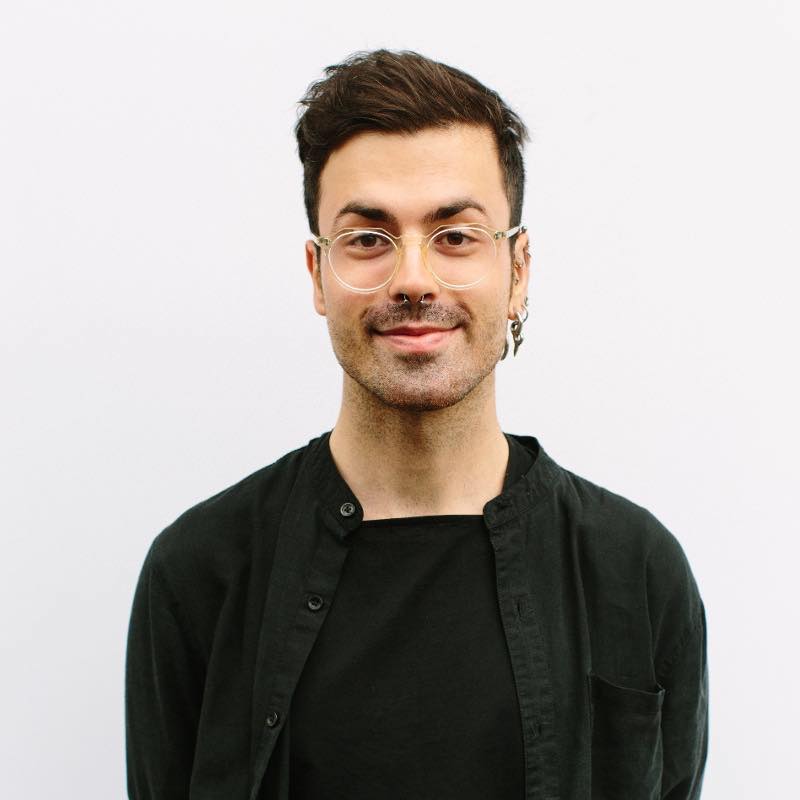
Our COVID-19 Case Studies explore the different ways the photographic community is working and staying connected through the pandemic. If you would like to submit a Case Study get in touch via chat@redeye.org.uk for more information.
Zak Dimitrov is a photographer and writer based in London. Completing a BA in Photography and an MA in Photography Arts has allowed him to further develop his writing skills and practice, which is concerned with memory, mortality, loss and time.
He has worked at various art schools, galleries and photo labs as well as contributed to written publications. Zak continues to explore his interests, spanning from history of art to curating, writing, video work and art presentation.
Has the new context inspired you to try anything innovative that you haven’t tried before? If so, what?
Yes! My Mamiya annoyingly broke down just when the first lockdown was announced so as much as I wanted to photograph, I was very restricted (the light meter didn't work so I was using a phone app, but I don't trust them so it felt a bit like shooting in the dark). I saw on Instagram that a small collective was offering free cyanotype paper so I jumped on board and they sent me a few sheets, which I used on my roof top. One thing lead to another, I bought black and white dark room paper, developer, fix, trays, etc. and I started making chemigrams and lumen prints. This was a major turning point for me because I've been interested in the intersection between photography and painting for years and how blurred the line is. My main point was to create art works which resemble paintings although they are technically photographs as they're created not with paint but photographic materials.
Are there any working methods that you envisage keeping once the lockdown is over?
Certainly, I'd like to keep writing as much as possible. I currently write for American Suburb X and The Photobook Store as well as some other publications on an ad-hoc basis. I started doing it more and more during lockdown, but I'd like to keep the momentum as I find it a really useful exercise to keep my brain sharp and my hand on the pulse of what's happening in the photography world. I'm lucky to have very open-minded editors who let me experiment with different types of writing, which is fantastic, especially because English is my third language so it's a great opportunity to see what can be done with words, structure, tone, etc. to describe something which is primarily meant to be experienced visually, not explained. I also find it quite refreshing to talk about someone else’s work, not just my own, and interestingly enough it does have influence on my own practice too as I look at plenty of photo books, which inevitably makes an imprint on my own way of seeing
How are you finding online life?
It has its pros and cons, like everything else. I'm currently teaching at a couple of universities, which is fantastic, because one of them is quite far from London so were it not for online learning I wouldn't be able to do it. Many talks have also moved online so there is less of a commitment, you can just turn it on whenever you feel like it. Having said that, I haven’t seen a single ''online exhibition'' or ''online private view''. In my opinion this negates the whole idea of a private view and experiencing an exhibition, which is very much about seeing the work in situ and socialising with fellow creatives.
How are you coping with the onslaught of information that is offered on so many media platforms?
I'm not hahaha! It's a tricky one because I like staying informed but at the same time it's so difficult to switch off. I spent Christmas with a good friend of mine and barely looked at my phone - no news, no Twitter - which was fantastic, it felt like a complete detox, but the fear of missing out is real because I find many professional opportunities on these platforms (this one is a case in point!).
What are your current and future plans for making, showing, distributing work?
I was recently selected to take part in the artist program at Four Corners, organised by the London Creative Network, and I've heard really good things about it so I'm very excited. It would be a chance to meet some new and some old faces, discuss work with my peers, learn new skills, use the resources and, all things permitting, organise group and solo shows. I’m also starting a PGCE at UCL in September to train as an Art and Design secondary school teacher. The program includes two exhibitions so it will be keeping me on my toes about producing work!
Are there any people or organisations that you would like to particularly highlight for their interesting approach during this time?
I really think that everyone, from artists to organisations, who managed to stay afloat, make, and develop work in these times deserves praise. I've personally found that it's very easy to fall into the slippery slope of stagnation and not doing much, especially for those of us who were on furlough, but I know plenty of artists who have used this time to put their financial, personal and other worries in a bubble, insulate themselves from it for at least a few hours during the day and just get down to making work. I really think this is a wonderful achievement because it takes resilience to keep going, but I also believe that art-making plays an instrumental role in keeping us all sane - a very useful and productive distraction when the world around us seems to be burning down!
See more from Zak on his website https://zakdimitrov.com/ and instagram @zakrdimitrov
